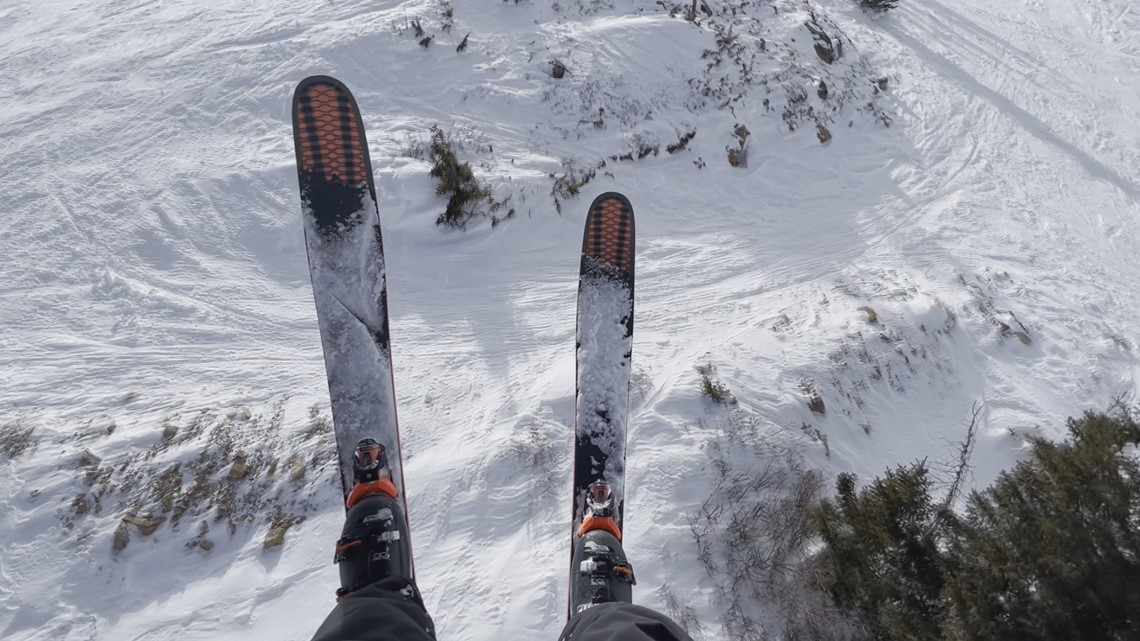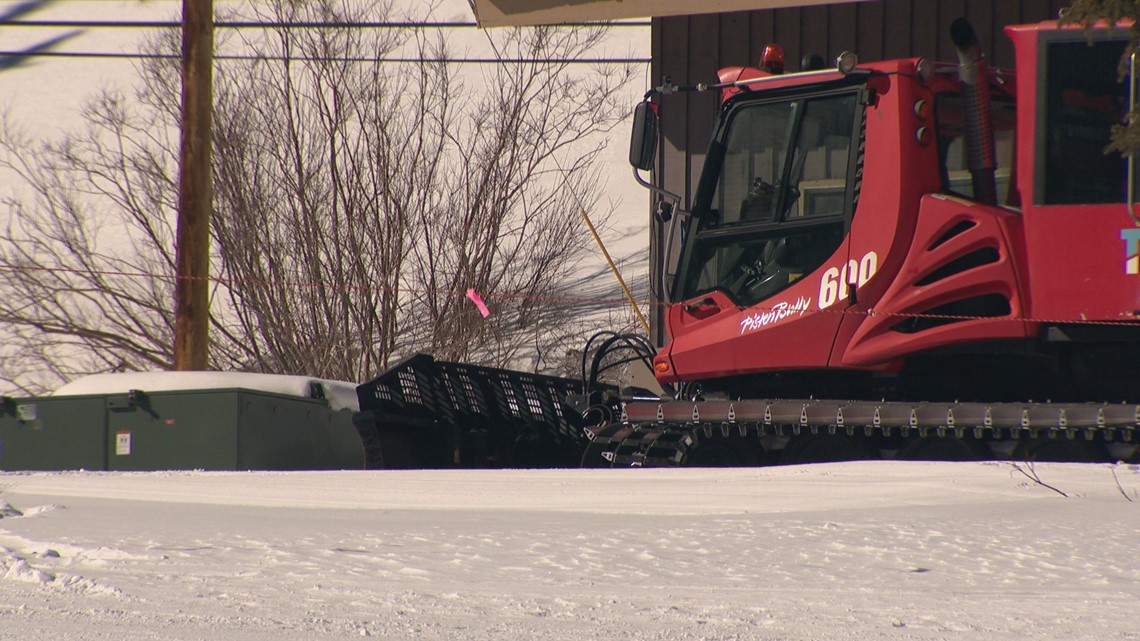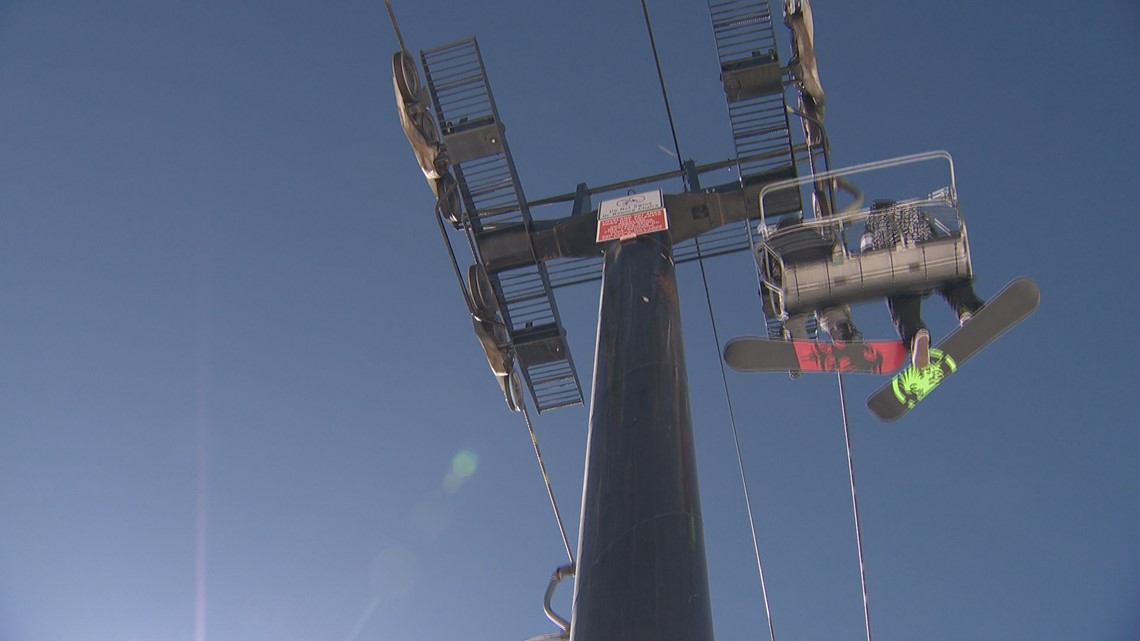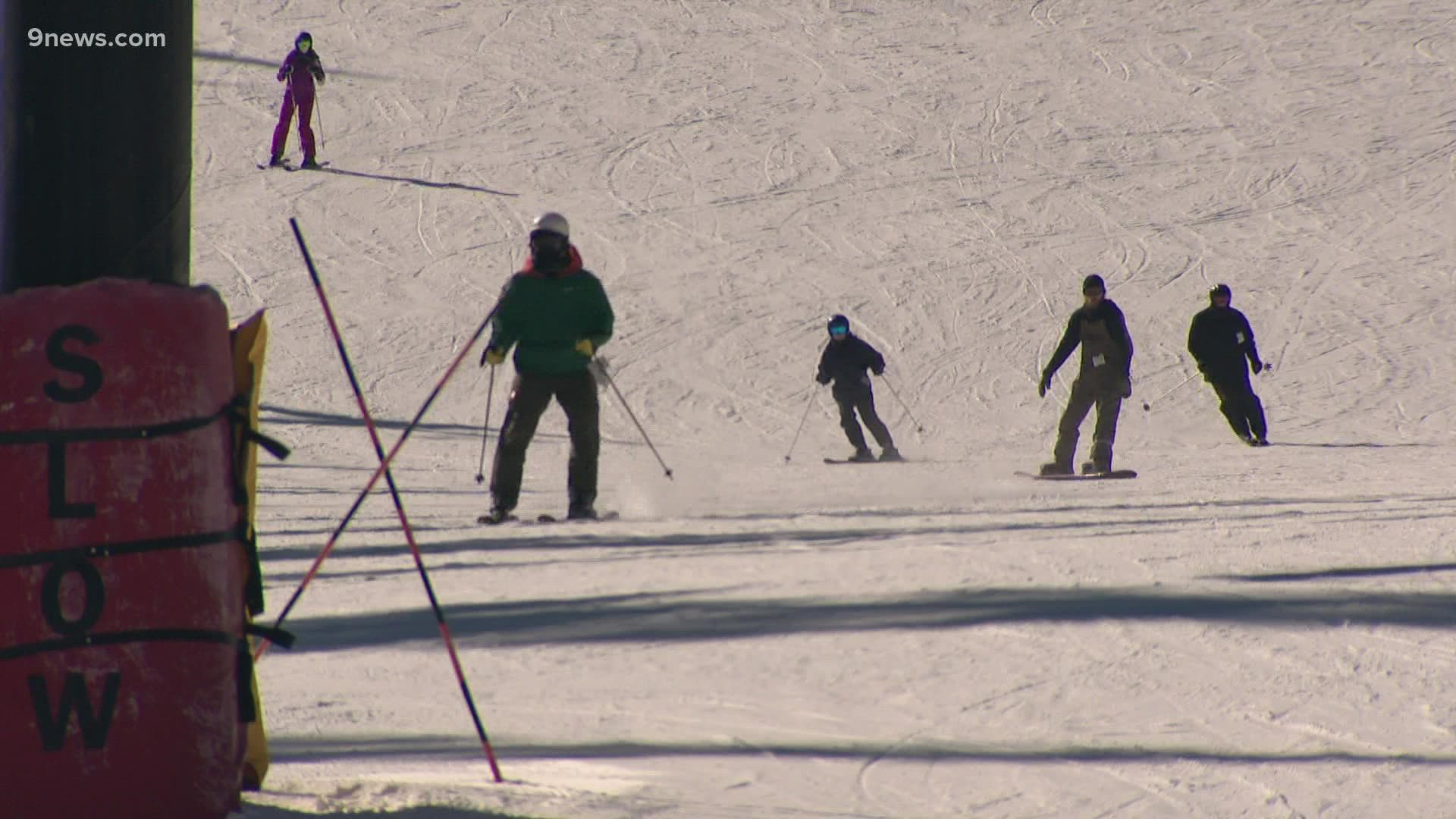COLORADO, USA — Colorado is known for its skiing. But the cost to get on the mountain continues to rise. From ski passes to gear to lodging to lessons, the price to hit the slopes can be restrictive for many.
A day pass at Vail can cost nearly $220 this month. Breckenridge isn’t much cheaper, with ticket window prices up to $200. At Copper, a day pass will set you back $190 most weekends.
Ticket window prices can be high. Very high. But Melanie Mills at Colorado Ski Country USA said very few people walk up to the ticket window and actually pay that listed price.
"That’s not really the number you want to look at when you’re thinking about how much does skiing really cost," Mills said. "That’s like saying every time you get on an airplane, you go out to DIA and walk up to the ticket counter and say, 'give me a ticket to New York.' Very few people do that."
Mills said while the average ticket window price last year was $180, the average price most people ended up paying for a day of skiing was $65. That’s when you factor in discounts, season passes, buddy passes, and yes, those expensive ticket window prices.
The Epic Local pass this year cost $583. You can pay that off skiing three days at Vail or Breckenridge. The Ikon base pass cost $779. Around four days at Copper or Winter Park will pay that off.
In a statement to 9NEWS, Vail Resorts said the Epic Local pass price was reduced 20% this year. The last time the price was that low was the 2015-16 season.
Vail Resorts did not make anyone available for an interview with 9NEWS for this story.
"We dramatically reduced our pass prices this year to provide even more value and flexibility to everyone, whether you want to ski and ride one day or every day," a statement from Vail Resorts read.


In all the interviews 9NEWS conducted for this story, representatives for the industry and resorts pointed to season passes, buddy passes, and other discounted tickets as a way to make skiing more affordable.
"The emphasis on season passes in Colorado and across the country has really developed intensely over the last 12 to 15 years," Mills said.
There are small, medium and large resorts in Colorado. The smaller the ski area, the better the deal you can get.
Powderhorn resort on the Grand Mesa sells season passes for $299, which is almost the price of one day at Vail. Sunlight Mountain Resort in Glenwood Springs has $65 day tickets, and if you buy two you get a discount and a six-pack of root beer.
Ticket window prices at Loveland Ski Area, one of the few family-owned ski areas in Colorado, are a comparatively cheap $94.
"People don’t realize all the resources that go into maintaining a ski area," said Rob Goodell, Chief Operating Officer at Loveland. "There’s no doubt, it is expensive to get into skiing. But we try to keep it comparatively affordable."


Goodell said the majority of people who ski at Loveland don't pay the ticket window price. The ski area offers discounts for things like booking in advance or skiing during the week.
"Not a big percentage of your people skiing are paying that ticket window price," Goodell said.
So what makes skiing so expensive?
"It takes a lot of bodies to run a ski area," Goodell said. "We all love to ski on groomed terrain. One of those snow machines costs more than most houses cost."
Labor costs are going up as ski areas invest more in employees, including in employee housing.
"Making snow, heating buildings, operating lifts in the winter environment that we operate in is continuing to get more expensive," Mills said. "I’m not aware of any of our operating costs that have gone down in recent years."


In the middle of so many trees, the cost of wildfire insurance is also rising. Eventually, the cost trickles down to the skier.
"If the ski area were to be overcome by fire, the losses would be enormous," Mills said.
In our quest to find out what makes skiing is so expensive, we couldn’t ignore the past.
Bill Philpott teaches history at the University of Denver, focusing on Colorado history. When the world started finding out about skiing here, he said, ski areas saw an opportunity.
"It’s the longer history, I think, that you have to look at to really understand how skiing as an industry really positioned itself to be able to charge those prices and still have customers pay," Philpott said. "It’s no longer just the rope tow or the T-bar. It’s mechanical lifts. It’s a larger base lodge. It’s restaurants. It’s a resort village. It’s condominiums."


Philpott also said it comes down to the image that a lot of ski resorts want to portray to people coming to the area.
"When skiing gets tied up in the notions of glamour and prestige, to be blunt, it can charge more. You’re cultivating a more affluent customer base and they can afford to pay more and ski areas know that," Philpott said. "They welcomed it because they knew that would sort of buttress their image of prestige and luxury, and they also knew that there would be people who would pay it."
Beyond the ticket prices, there are also steep costs associated with lodging, gear rentals, parking and lessons.
So next time you grab your skis, poles, boots, helmet, googles, gloves, pants, coat and ski pass, and realize you’ve already spent thousands of dollars before you’re even on the lift, at least now you know why you’ll be paying more when you get to the mountains.
SUGGESTED VIDEOS: Snow in Colorado

